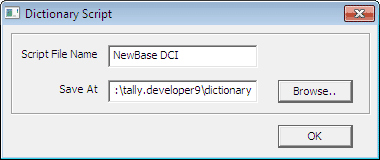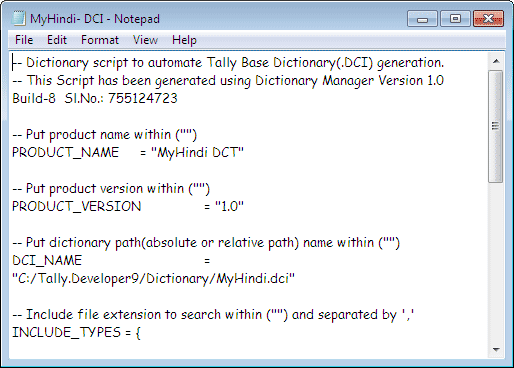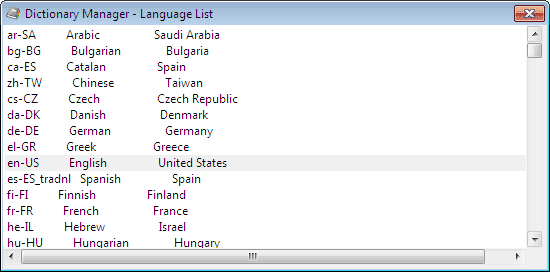Automating Dictionary Creation
In Dictionary Manager, the process of creating a base dictionary can be automated. Automating the process ensures that creating a base dictionary becomes a one time activity.
On automation, the .dci file can be generated from the command line itself. Script files are created automatically based on the values specified in each field of the New Base Dictionary screen.
To automate the new base dictionary creation process
- Specify the values in the New Base Dictionary creation screen.
- Click Automate in the New Base Dictionary screen.
- Enter the script file name in the field Script File Name .
- Enter the location to save the script file in the field Save At as shown below:

- Click OK to complete the automation process.
- The .ds file (script file) will be saved at the specified location.
- The script file for the working dictionary creation process is also created similarly.
Editing the Script File
The script file once created, can be edited to modify the values of the parameters like Product Name , Product Version , and so on.

Executing the Script File
To execute the script file from command prompt, use the following syntax:
dctmgr –s <Script File path>
In the syntax,
- dctmgr is the command.
- -s is the option to execute the script file. It pops up current process message window, and also logs the message into the log file, dctmgr.log .
- -qs logs the messages to the dctmgr.log file without displaying the current process window.
- <Script file pathname> is the name, and path for the script file.
Options in the dctmgr command
Dctmgr – l
The command dctmgr – l displays all the language IDs, language names, and the country name in the Language List message box.
The Dictionary Manager – Language List appears as shown below:

Opening Dictionary files
Syntax:
Dctmgr <file name>
In the syntax
<file name> can be .DCI or .DCW
This command launches the dictionary manager interface, and opens the specified file.
Example:
Dctmgr TestDCW.dcw
This command will launch dictionary manager tool, and open the working dictionary TestDCW.dcw in it.



